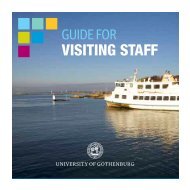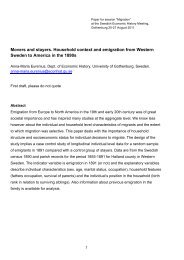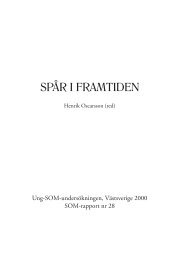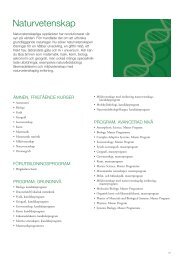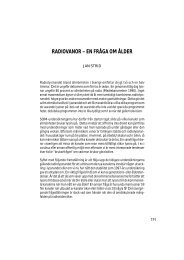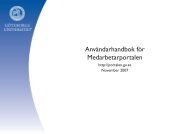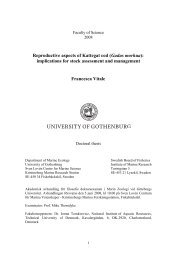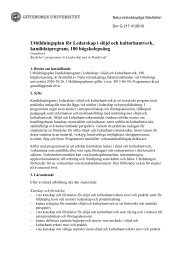development of small-scale intermodal freight transportation in a ...
development of small-scale intermodal freight transportation in a ...
development of small-scale intermodal freight transportation in a ...
Create successful ePaper yourself
Turn your PDF publications into a flip-book with our unique Google optimized e-Paper software.
thesis, p. 16). With overnight rail haulage, road distribution takes place <strong>in</strong> the early morn<strong>in</strong>g<br />
and loaded ITUs are picked up <strong>in</strong> the late afternoon and even<strong>in</strong>g.<br />
A lead<strong>in</strong>g pr<strong>in</strong>ciple <strong>of</strong> European railways is to operate passenger tra<strong>in</strong>s dur<strong>in</strong>g the day and<br />
<strong>freight</strong> tra<strong>in</strong>s at night. With<strong>in</strong> reasonable distances, <strong><strong>in</strong>termodal</strong> rail haulage is thus an overnight<br />
bus<strong>in</strong>ess and the wagons stay available for load<strong>in</strong>g at term<strong>in</strong>als dur<strong>in</strong>g the day. The<br />
prioritised traffic design (see section 4.2.1) is direct connection, but secondary flows are<br />
handled with<strong>in</strong> the normal wagonload system with its <strong>in</strong>termediate marshall<strong>in</strong>g operations.<br />
If rail haulage can not be arranged overnight, the <strong><strong>in</strong>termodal</strong> transport normally takes an<br />
additional 24 hours <strong>in</strong>to account. The UIRR – which organises the dom<strong>in</strong>at<strong>in</strong>g <strong><strong>in</strong>termodal</strong><br />
transport companies – reported an average transport distance (term<strong>in</strong>al to term<strong>in</strong>al) <strong>of</strong> 660<br />
kilometres <strong>in</strong> domestic traffic and 760 kilometres <strong>in</strong> <strong>in</strong>ternational traffic 27 . For 1994, ICF –<br />
traditionally active <strong>in</strong> <strong>in</strong>ternational bus<strong>in</strong>ess – reports an average distance <strong>of</strong> 834 kilometres<br />
for seaport traffic and 1192 kilometres for cont<strong>in</strong>ental traffi. Once aga<strong>in</strong>, the average distances<br />
rose <strong>in</strong> 1994 – by 4.8% and 3.8% respectively (ICF, 1995, p. 17). This is obviously<br />
alarm<strong>in</strong>g, although ICF underl<strong>in</strong>es that the <strong>in</strong>creases emphasise the competitiveness over<br />
longer distances rather than market shares be<strong>in</strong>g lost to lorries.<br />
Intermodal transport is <strong>of</strong>ten referred to as be<strong>in</strong>g more successful <strong>in</strong> the USA than <strong>in</strong><br />
Europe, but it should be kept <strong>in</strong> m<strong>in</strong>d that this is not only to be attributed to the efficiency<br />
and private ownership <strong>of</strong> the American railroads. Double-stack tra<strong>in</strong>s 28 <strong>of</strong> Union Pacific<br />
Railroad Company <strong>in</strong> the USA have the capacity <strong>of</strong> 280 pieces <strong>of</strong> 40-foot conta<strong>in</strong>ers<br />
(HILL, <strong>in</strong>terview, 1993) compared to about 40 <strong>in</strong> Europe, but the tra<strong>in</strong>s <strong>in</strong> the USA are<br />
generally pulled by more than one eng<strong>in</strong>e and at a considerably gentler pace. Moreover, the<br />
geographic and demographic conditions favour American railroads more than the European<br />
railways. The American services are very successful over long distances, but the problems<br />
with compet<strong>in</strong>g over shorter distances are perhaps worse than <strong>in</strong> Europe. The shortest competitive<br />
distance for <strong><strong>in</strong>termodal</strong> services is <strong>of</strong>ten stated as 500 miles (800 kilometres) <strong>in</strong> the<br />
USA compared to 500 kilometres <strong>in</strong> Europe 29 . The American <strong><strong>in</strong>termodal</strong> <strong>in</strong>dustry, however,<br />
is now fight<strong>in</strong>g to re-enter the “below 500 mile market” (GELLMAN, 1994).<br />
From the road transport company’s po<strong>in</strong>t <strong>of</strong> view, a ferry cross<strong>in</strong>g is normally regarded as a<br />
part <strong>of</strong> the railway service. For certa<strong>in</strong> transport relations, however, the ferry cross<strong>in</strong>g is<br />
better performed without rail wagons, usually referred to as broken traffic where semi-<br />
27 The figures are notably equal and actually converg<strong>in</strong>g. The reasons are the <strong>in</strong>creas<strong>in</strong>g use <strong>of</strong> long-distance<br />
domestic transport <strong>in</strong> Italy and short-distance – yet <strong>in</strong>ternational – roll<strong>in</strong>g highway services (UIRR, 1997, p. 9).<br />
28 The very generous load<strong>in</strong>g pr<strong>of</strong>ile <strong>in</strong> the USA facilitates that conta<strong>in</strong>ers can be stacked two high on rail wagons.<br />
29 The shortest distance over which <strong><strong>in</strong>termodal</strong> <strong>transportation</strong> is competitive depends on a truly wide range <strong>of</strong><br />
factors, e.g. the demanded transport volumes and transport quality, road and rail <strong>in</strong>frastructure, general operation<br />
pr<strong>in</strong>ciples and transshipment costs. A firm distance can thus only be calculated <strong>in</strong> a particular case, but the<br />
given figures are the most mentioned ones.<br />
15



